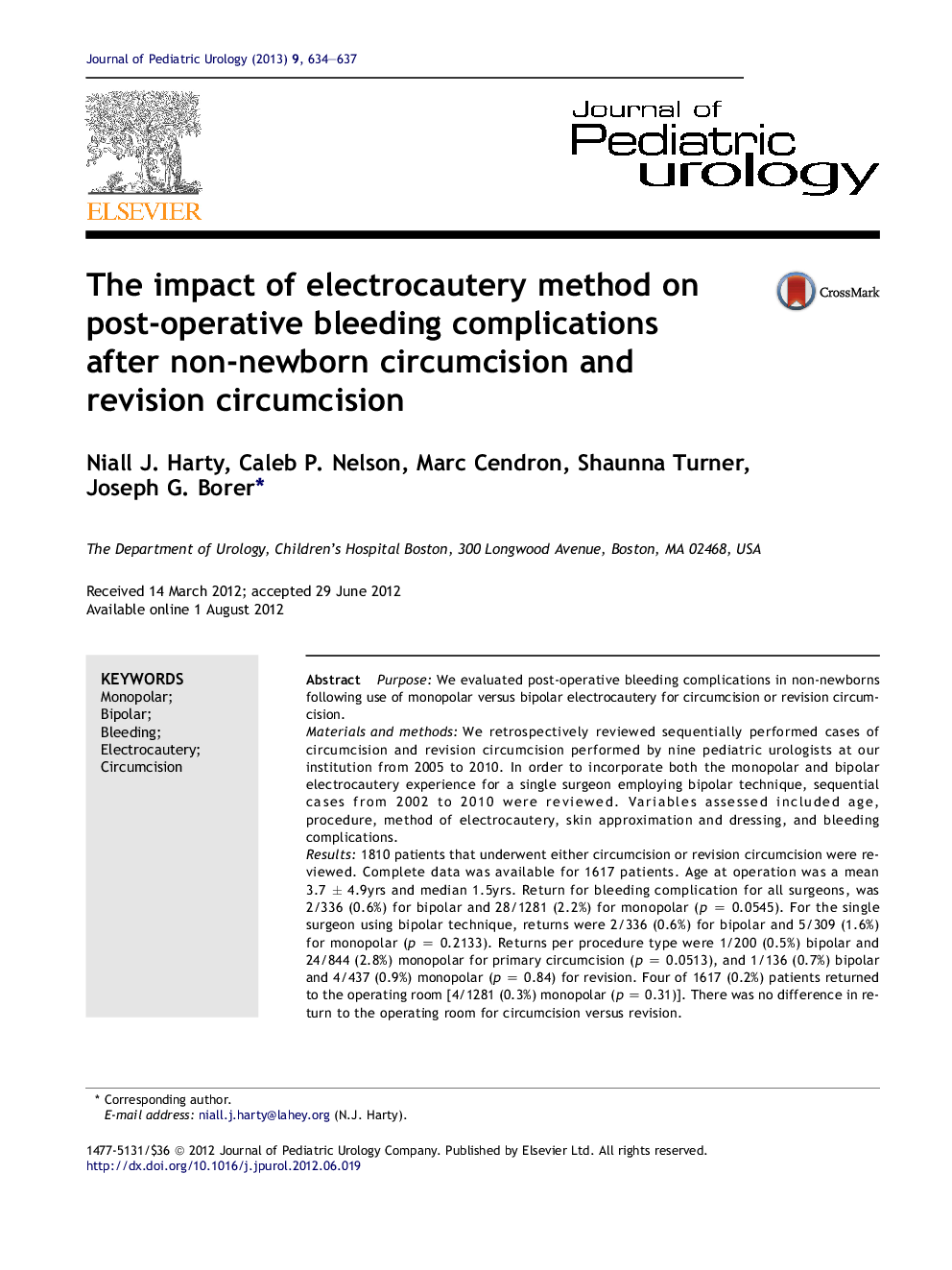| Article ID | Journal | Published Year | Pages | File Type |
|---|---|---|---|---|
| 4162539 | Journal of Pediatric Urology | 2013 | 4 Pages |
PurposeWe evaluated post-operative bleeding complications in non-newborns following use of monopolar versus bipolar electrocautery for circumcision or revision circumcision.Materials and methodsWe retrospectively reviewed sequentially performed cases of circumcision and revision circumcision performed by nine pediatric urologists at our institution from 2005 to 2010. In order to incorporate both the monopolar and bipolar electrocautery experience for a single surgeon employing bipolar technique, sequential cases from 2002 to 2010 were reviewed. Variables assessed included age, procedure, method of electrocautery, skin approximation and dressing, and bleeding complications.Results1810 patients that underwent either circumcision or revision circumcision were reviewed. Complete data was available for 1617 patients. Age at operation was a mean 3.7 ± 4.9yrs and median 1.5yrs. Return for bleeding complication for all surgeons, was 2/336 (0.6%) for bipolar and 28/1281 (2.2%) for monopolar (p = 0.0545). For the single surgeon using bipolar technique, returns were 2/336 (0.6%) for bipolar and 5/309 (1.6%) for monopolar (p = 0.2133). Returns per procedure type were 1/200 (0.5%) bipolar and 24/844 (2.8%) monopolar for primary circumcision (p = 0.0513), and 1/136 (0.7%) bipolar and 4/437 (0.9%) monopolar (p = 0.84) for revision. Four of 1617 (0.2%) patients returned to the operating room [4/1281 (0.3%) monopolar (p = 0.31)]. There was no difference in return to the operating room for circumcision versus revision.ConclusionReturn for bleeding complications after circumcision and revision circumcision occurred more frequently after monopolar electrocautery compared to bipolar. However, there was no significant difference between the two electrocautery methods. Either form of electrocautery appears to be effective for this common pediatric urologic procedure.
